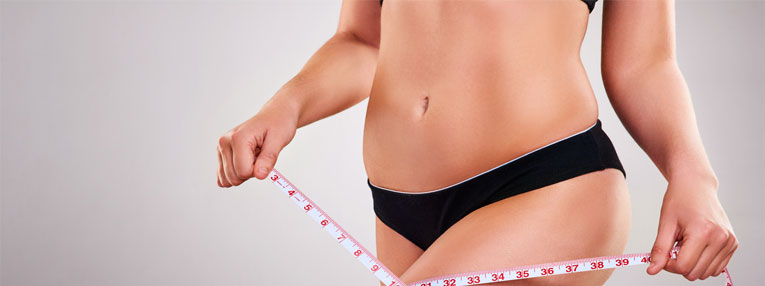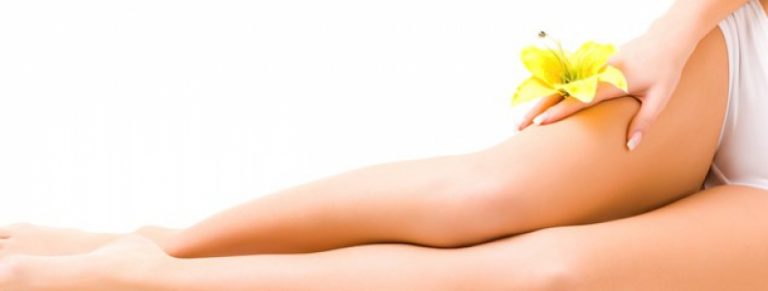Understanding the Different Types of Liposuction
Although diet and exercise are the best way to get rid of stubborn body fat, these are not always entirely effective. Some areas of fat are likely to be resistant to natural options and thus can give an unbalanced, lumpy appearance. These are exactly the problems that liposuction is meant to solve.
There are several different types of liposuction. Each works in a slightly different way and has different advantages and disadvantages. Understanding the difference between these will allow you to make the best decision for your own body.
Suction-Assisted Liposuction
This is the default type of liposuction and the oldest kind as well. In this type of liposuction, small incisions are made over the area to be suctioned. A hollow needle, called a cannula, is inserted through these incisions to suction out fat cells.
The recovery time for this procedure can be 1-3 months, depending on the extent of the procedure and how you heal. In addition, it can take three to six months for your shape to become final. However, most people in lipo recovery are able to return to their normal duties after just a few days.
This type of lipo can be used in a variety of areas of the body, including the bottom, thighs, legs, abdomen, back, and arms. Most people do not use it for small areas, such as under their chin, because it is one of the less precise types of liposuction.
The main advantage of this type of liposuction is that it is the least pricey type of liposuction. In addition, it has been used for a long time and is a “tried and true” procedure that many physicians can perform.
There are several suction lipo disadvantages as well. First, it causes more bleeding and bruising than any other type of liposuction. Second, it is harder to control fat removal, so there is a higher rate of lumpiness, dimpling, and other imperfections. People often have to have several treatments in order to get the results that they want with this type of liposuction.
One of the major lipo disadvantages is that many people require general anesthesia in order to go through it. Although the newer types of liposuction usually can be done with just local anesthesia, many patients have to be put under general anesthesia for this type. This introduces a new range of potential complications and side effects.
Tumescent Liposuction
Tumescent means “swollen.” Tumescent liposuction is similar to traditional liposuction except that lidocaine and epinephrine are used to make fat swollen and thus easier to identify and remove. Lidocaine is a powerful anesthetic and also can cause minor swelling in fat cells. In addition, epinephrine is usually added because this constricts blood vessels and can dramatically reduce bleeding.
An anesthetic is injected into pockets of fat, which makes them swell. A small needle called a cannula attached to a suction device is then used to remove fat cells.
Tumescent liposuction can be used on almost any part of the body that commonly receives liposuction. Most of the swelling and pain from this procedure will be gone in about a month. However, as with normal lipo it can take 3-6 months to see your final, newly trim shape.
One of the main tumescent lipo advantages is that it does not cause as much bleeding and bruising. In addition, it is one of the cheaper options available for fat removal. This is generally considered the gold standard in liposuction procedures. However, it lacks some of technological enhancements and advantages of other methods.
Ultrasound-Assisted Liposuction (UAL)
Ultrasound has been around for about 40 years. Although it is often used as a means of imaging, it also can be a treatment.
Ultrasound uses high-frequency sound waves that can create high amounts of energy in tissues where it is focused. This can dissolve fat cells, which makes it easier to remove using suction.
Ultrasound-assisted liposuction is often used in areas of tougher fat, such as in the male chest, on the back, in ‘saddlebags’, and in other areas where traditional liposuction may be difficult. The recovery is similar to tumescent liposuction, although people may experience occasional blistering or burns.
One of the key advantages of ultrasound-assisted liposuction is that is can more quickly remove fibrous or otherwise stubborn fat that otherwise might require several treatments. In addition, a larger volume of fat can be safely removed using this type of liposuction since it is liquified and less likely to bruise or bleed.
There are also a few disadvantages. Because ultrasound does produce high energy rays, there is a higher chance of developing blisters and burns. There is also a higher chance of numbness and of developing small blood clots. Nonetheless, many people feel that this type of liposuction is the right choice for them, particularly if they have fat that is fibrous or otherwise more likely to be stubborn.
Laser-Assisted Liposuction (LAL)
Laser-assisted liposuction is similar to ultrasound-assisted liposuction except that it uses a laser to break down fat. In this type of procedure, a laser probe is inserted through the suction cannula. Anesthetic and epinephrine are then injected into the area to control pain and bleeding. The plastic surgeon then makes several tiny cuts and inserts the cannula and laser probe.
Lasers break down fat very efficiently so it can be removed as a liquid oil through the cannula. Any liquefied fat that is not suctioned is then absorbed by the body. Like ultrasound-assisted liposuction, it has a recovery time of about one month.
There are several advantages to this kind of fat removal. First, the laser fiber is extremely small and only a tiny cannula is needed to suction the liquefied fat. As a result, this type of lipo requires only very small incisions that heal quickly and without a scar.
In addition, lasers are very small and easy to control, which means that this type of liposuction can be extremely precise. Your surgeon will be able to fine-tune and give you the natural and beautiful shape that you desire. Another advantage is that this method is fine enough that it can be used anywhere on the body, even unusual areas such as the face. Last, lasers also tighten the skin, so many people who get this procedure find that their skin is firmer and more youthful in addition to losing fat.
In addition to the advantages, there are disadvantages as well. Recovery times can be longer, with many people requiring pain relievers for several weeks and taking 6 weeks or more to assume their final shape. In addition, there is a rare but present risk of burns because lasers create heat and are extremely powerful.
What Is SmartLipo?
SmartLipo is a type of liposuction that uses lasers. However, it is different from traditional laser-assisted liposuction because it uses two distinctive frequencies. One is used to liquefy fat in areas where sculpting is needed. The other wavelength is one that is known to tighten tissues and skin in the area, as well as stimulating collagen production.
This specialized type of laser liposuction has several distinct advantages. First, it tightens skin more than any other method, whereas other types of liposuction can leave people with loose or sagging skin. Second, it is much faster. One treatment is sufficient for many people, and the recovery time can be as short as just a few days.
Smart Lipo is the most precise type of liposuction on the market. This is one of the main Smart Lipo advantages. People can get sculpting in any area of their body, even in the face, and expect a tight and smooth result. In addition, it has the shortest recovery time of any type of liposuction. The Smart Lipo recovery time is so short that many people only miss one to two days of work.
However, there are similar lipo disadvantages to those seen in laser liposuction. As with all procedures, there are potential risks and side effects. Lasers use a great deal of heat so there is always a risk of burns or blistering. However, a skilled plastic surgeon knows how to use the equipment so this risk will be minimal.
How to Decide Which Type of Liposuction Is Best for You
When you are deciding what type of liposuction to get, there are several factors to consider. These include:
- The area(s) of the body that you wish to have sculpted
- The amount of fat that you would like to have removed
- The amount of money that you wish to spend
- How much recovery time you can feasibly accommodate
- Whether you want skin and tissue tightening in addition to liposuction
- Whether you can go under general anesthesia
- Your general pain tolerance
Most importantly, discuss your priorities with your plastic surgeon. A high-quality cosmetic surgeon will be able to discuss which of the many options are the best ones for you.
At the offices of Dr. Rudderman, we are always glad to consult with patients to help them decide which procedure best meets their goals and expectations. Call us today at 678.566.7200 if you’re interested in learning more about how you can get the trim, sculpted figure of your dreams.





